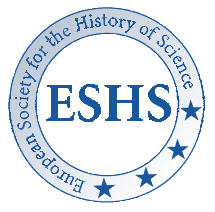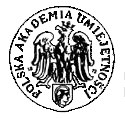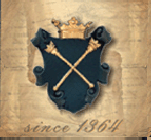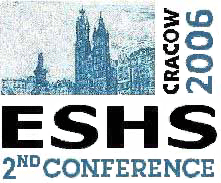Last modification: 24 September 2008
Online Book of Abstracts - PLENARY LECTURES
Edited by Michal Kokowski
http://www.cyfronet.pl/~n1kokows/home.html
n1kokows@cyf-kr.edu.pl
PL-1
Towards a new web site of the DHST:
participatory media for a community of scholars, possibilities and choices
Fabio Bevilacqua (Pavia, Italy)
Vice-President of the DHST / IUHPS
fabio.bevilacqua@gmail.com
Lidia Falomo Bernarduzzi (Pavia, Italy)
Falomo@ppp.unipv.it
The digital world is witnessing and participating in a new revolution that goes by the name of "Web 2.0" and deals with "participatory media" and "social networking"; together with other relevant recent developments it can offer great opportunities for the international community of historians of science.
The phenomenal rapid increase in sites that allow easy communications and exchange of information between members (like MySpace, which has now reached 100 million users); the digitalisation of millions of printed books, images, movies, and music tracks that could within a decade cover the entirety of humankind's cultural production; co-operative work with tools (like wikis) that have led to new instruments that are used by millions of users daily and compete with well established printed ones; the instruments of search and retrieve that enable finding (for instance using "tags") documents previously lost in "the long tail", lectures accessible to all (through podcasts), news available in real time (through "RSS"), pose new opportunities and new challenges and question our pleasant, traditional academic scientific routine.
Today historians of science usually work individually within strict boundaries, gather around small local societies, interact just through email or by expensively participating in conferences, publish in traditional media (books and journals), often with financial costs and giving away the copyright of their results. This is possibly not the best way to face universal shortage of funds, of academic positions, of good students.
As a small step to improve matters I propose that the new edition of our web site be based on these new tools (the present one has done a good job so far and has earned a reasonable page rank) and that an effort be made by the Division, but also by other societies, to utilise them. The site would be accessible to individual members and supervised by the Division's officials. The guiding principles could be those of Open Access (Berlin declaration on the availability of documents online), Open Source (software), Creative commons (a more liberal approach to copyright). The new Web site should integrate the existing potential for searching (the web, the site, the desktop, also utilizing clusters; books, scientific journals, libraries, catalogues, images, movies, blogs, wikis, podcasts, tags), for publishing on the web (working papers, preprints, books, bibliographies, catalogues, biographies, animations, simulations, documentaries, teaching materials, presentations), for receiving at will (not necessarily through email) news organised chronologically (scalable calendars) and geographically (interactive maps) (on current contents, conferences, publications, events, anniversaries, prizes, scholarships, grants), for establishing a community of individual members with the possibility to easily find, contact and work co-operatively with colleagues who share the same interests and fields of research (through profiles, groups, wikis, web mail, chat, talk (phone voip), videoconferencing) and to easily find and locate societies, research centres, university programmes, libraries, journals, archives, museums, exhibitions. The site should of course continue and improve the diffusion of information on the Division's life and activities.
The standard home page will gradually offer all these possibilities, and the individual member will have the possibility to personalize her/his home page with the tools of choice. Given that most tools are scalable, a similar approach could be adopted by other societies and the result would be increased co-operation, greater visibility and scientific relevance.
A choice should be made between joining together different available public domain software programmes or utilising integrated tools freely downloaded from a major global company.
PL-2
Crossroads of medicine and chemistry in the 20th century
Ryszard J. Gryglewski (Cracow, Poland)
Honorary Fellow of the British Pharmacological Society
r.gryglewski@jmrc.org.pl
In the 20th century an interaction between chemists and physicians was highly successful. Many researchers were graduated both in chemistry and medicine like Janusz Supniewski (1899-1964). His education enabled him to explore a role of acetaldehyde in the carbohydrate and lipid metabolism in diabetic dogs (1926), to synthesize the imidazole derivative with anti-histaminic action (1928), to discover pharmacological properties of nicotinamide (1936) or to synthesize an antimetabolite of the cholesterol biosynthetic cascade, that was endowed with anti-atherosclerotic properties ( 1959).
The Nobel Prize Laureates in medicine and physiology frequently were deeply rooted in chemistry. Albert Szent Györgyi (1937) discovered not only biological role of ascorbate and bioflavonoids but also the fumarate catalysis. Sir Hans Krebs (1953) discovered the citric acid cycle, and Fritz Lipmann (1953) acetyl-CoA. These findings contributed to elucidation of the mechanisms of generation and saving life energy. Sir John Vane (1982) himself by education a chemist, by inclination a pharmacologist discovered the mechanism of action of aspirin making it available for treatment of myocardial infarction. He also introduced a new group of drugs for treatment of hypertension and angiopathies (ACE-Inhibitors). Sir John was closely associated with British and American industrial chemists. The discoveries of Sir James Black (1988) of the histamine H2 receptor antagonists and the β-adrenergic receptor antagonists saved lives of many patients with gastro-duodenal ulcers and cardio-vascular disease, respectively. Sir James was also associated with the industrial chemists. Robert Furchgott (1998) discovered a prototype of all life signaling molecules - nitric oxide radical (NO*). A highly chemical finding for a pharmacologist. This discovery not only explained the mechanism of therapeutic action of nitro-glycerine but also opened a new perspective for understanding of endothelial dysfunction in atherothrombosis and in diabetic angiopathies. No doubt, the 20th century was a successful period for collaboration of medicine with chemistry.
PL-3
Alexander von Humboldt - the explorer and the scientist
Eberhard Knobloch (Berlin, Germany)
President of the ESHS
eberhard.knobloch@tu-berlin.de
On June 5, 1799 the European scholar Alexander von Humboldt, explorer and scientist, left La Coruna, in Spain, to go to Cumaná, Venezuela, where he arrived on July 16, 1799. He was away from Europe for more than five years. During that time he travelled in Cuba, Columbia (I use the modern geographic names), Ecuador, Peru, Ecuador (a second time), Mexico, Cuba (a second time), and the USA. On June 30, 1804 he left Newcastle, USA, and arrived in Bordeaux, France, on August 3.
The presidential address will deal with four aspects of this famous journey. 1. Scientific aims: Humboldt's journeys and his scientific activities were two sides of the same coin; he himself compared the study of a new science with a journey to remote countries. 2. Methodology: Humboldt explained in detail his positivistic scientific methodology in his treatise "On the isothermal lines and the distribution of heat on the earth" (1817). 3. Achievements and results: Humboldt contributed to meteorology, climatology, earth magnetism, geology, volcanism, botany, zoology. Yet, the old Humboldt claimed only three merits: the geography of plants, the theory of isothermal lines, geomagnitism. 4. The method of mean values: Humboldt spoke at great length about errors, limits, and advantages of the method of mean values. He hoped that his method would make it possible to connect huge series of seemingly unrelated facts and to demonstrate their mutual dependence.
PL-4
The Republic of Letters in transition: William Thomson and natural philosophy ca. 1850
Giuliano Pancaldi (Bologna, Italy)
Giuliano.Pancaldi@unibo.it
The old, venerable notion of the Republic of Letters is enjoying a new life among historians of science. After the localist turn in science studies, and often among the same circles of scholars who sustained the turn, there is a renewed interest in exploring how distant factors combine with local factors in the production of knowledge. Indeed, once we have get rid of the mythological side of the Republic of Letters notion, what remains to be explored is the powerful role played by "imagined communities" side by side with real, local communities in shaping scientific practice. My talk is an exercise in this kind of exploration. The period I will be discussing is the early Victorian period. The field is "natural philosophy", at a stage when it was shifting into the discipline we now call physics. The scientist I will take as an exemplar is William Thomson, later Lord Kelvin. I will explore how the imagined, international communities of natural philosophers and experimenters Thomson felt he belonged to combined with local factors in shaping his early scientific practice, and the physics laboratory that he established at the University of Glasgow.
PL-5
Are we ready for common history of science?
Andrzej K. Wróblewski (Warsaw, Poland)
akw@fuw.edu.pl
The creation and growth of the European Union proves that many European countries have decided to share the common future. But what about our past? One knows about differences in interpretation of political and social history of various nations, so that it is difficult, perhaps even hopeless, to expect a commonly accepted history of Europe or of the world.
One could expect the history of science to be a less controversial area but it seems not to be so. A brief survey of textbooks and biographical dictionaries published in various countries shows that there are several differing versions of the history of science: British (or Anglosaxon), French, German, Italian, Russian, and probably more. Is it possible to achieve a history of science which could be accepted by all countries?
The author takes a pragmatic attitude that the objective history of science should provide faithful reconstruction of the past events, that is, it should show how things did happen, not how they could have happened. If we agree upon that statement then it should not be impossible to recreate the development of science in history, however unjust it was for some scientists. The sole objective criterion should always be the impact of a given person or a given result on the course of events. Hence, for example, one should not take into account results and ideas which for one reason or another were not disseminated among scientific community at the time and could not influence development of science. The discussion will be focused on the history of physics because of the author's background.




